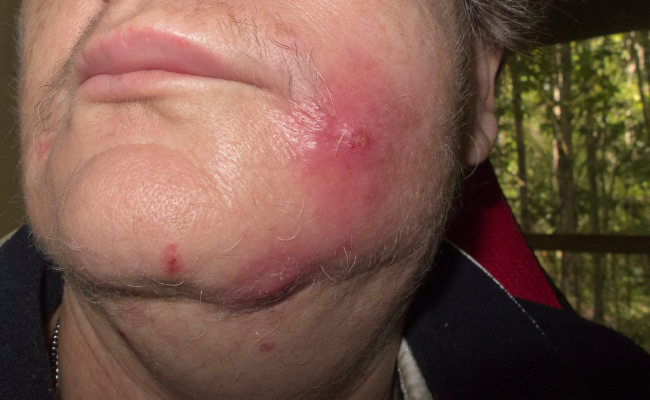How to Treat Staph Infection?
- October 27, 2023
- No Comments

What is Staph Infection?
Staph infection, commonly known as Staphylococcus infection, is caused by bacteria frequently found on the skin or in nasal passages. While generally harmless, these bacteria pose a threat when entering the body through cuts or wounds, leading to a range of infections. From minor skin irritations to severe, life-threatening conditions, prompt recognition and proper treatment are crucial. Staphylococcal infections, often termed as staph infections, emanate from bacteria within the Staphylococcus genus. With over 30 strains, the primary human pathogen is Staphylococcus aureus, recognized for its capacity to cause disease.
Why Does Staph Infection Occur?
The entrance of Staph bacteria into the body can occur through various avenues:
- Skin Breaks: Staph infections often initiate through cuts, wounds, or abrasions on the skin. The bacteria capitalize on these openings to enter the body.
- Contaminated Objects: Everyday objects and surfaces can harbor Staph bacteria. Contact with contaminated items can facilitate the transmission of these microorganisms.
- Close Contact: Skin-to-skin contact with an infected person increases the likelihood of Staph transmission. This is particularly relevant in crowded or communal settings.
- Compromised Immune System: Individuals with weakened immune systems, whether due to underlying health conditions or medical treatments, are more susceptible to Staph infections.
How Does Staph Infection Manifest?
The manifestations of Staph infection vary and can affect different areas of the body:
- Skin Infections: Staph commonly leads to skin infections such as boils, impetigo, or cellulitis. These infections manifest with symptoms like redness, swelling, and the formation of pus-filled lesions.
- Food Poisoning: Ingesting food contaminated with Staph toxins can result in symptoms like nausea, vomiting, and abdominal cramps. This is often a result of improper food handling and storage.
- Toxic Shock Syndrome (TSS): While rare, TSS is a severe condition associated with Staph infection. Symptoms include high fever, rash, and involvement of multiple organs. It is commonly linked to tampon use, surgery, or skin wounds.
- Bloodstream Infections: Invasive Staph infections can progress to bloodstream infections (bacteremia), posing serious health risks and requiring immediate medical attention.
Treatment Solutions for Staph Infection:
Addressing Staph infection involves a multi-faceted approach to ensure effective and comprehensive care:
- Antibiotics: Antibiotics are a cornerstone of Staph infection treatment. The choice of antibiotic depends on the type and severity of the infection. In cases of Methicillin-resistant Staphylococcus aureus (MRSA), alternative antibiotics may be necessary.
- Drainage of Abscesses: For skin abscesses or boils, drainage is often necessary to remove pus and facilitate healing. Healthcare professionals typically perform this procedure to ensure proper care.
- Wound Care: Proper wound care is crucial to prevent Staph infections. Clean and cover wounds, keeping them dry until they heal to minimize the risk of bacterial entry.
- Hygiene Practices: Regular handwashing, use of hand sanitizers, and maintaining good personal hygiene are essential in preventing the spread of Staph bacteria.
- Avoiding Contaminated Items: Refraining from sharing personal items like towels, razors, or clothing minimizes the risk of Staph transmission, especially in communal settings.
- Vaccination: While not a universal solution, vaccination against Staphylococcus aureus may be considered for individuals at high risk of recurrent infections.
Benefits of Treating Staph Infection:
The advantages of prompt and effective treatment for Staph infection are numerous:
- Prevention of Complications: Early and appropriate treatment prevents Staph infections from escalating to more severe conditions, reducing the risk of complications.
- Pain Relief: Treatment provides relief from the pain and discomfort associated with Staph skin infections, contributing to a faster recovery.
- Reduced Spread of Infection: Implementing proper hygiene practices and timely treatment help prevent the spread of Staph bacteria to others, minimizing the risk of outbreaks.
- Avoidance of Antibiotic Resistance: Completing the prescribed antibiotic course as directed by healthcare professionals is crucial to avoid antibiotic resistance, ensuring effective future treatments.
- Quicker Recovery: Early intervention and appropriate treatment lead to a quicker recovery, minimizing the duration and severity of symptoms.
- Improved Quality of Life: Effective treatment not only addresses the physical aspects of Staph infections but also contributes to an overall improved quality of life by alleviating the emotional and psychological impact.
Comments (0)